Retro Replay Review
Gameplay
Gingahyōryū Vifam invites players into a strategic space odyssey where every decision counts. Your primary objective is to pilot the mothership through a treacherous planetary system, negotiating gravitational pulls and fuel constraints. The game’s three-monitor system ensures variety: the starmap for navigation, the first-person combat view for Vifam dogfights, and the service screen for maintenance tasks.
On Monitor 1, the two-dimensional starmap demands careful plotting to avoid being drawn into a planet’s gravity well. If you stray too close, the action instantly shifts into a close-up view, forcing you to accelerate rapidly to escape. Paired with a limited fuel supply, this mechanic injects genuine tension into every jump between worlds, especially as you battle against the clock and dwindling resources.
Monitor 2 transitions into first-person space combat, letting you pilot the Vifam robot directly against enemy units. Here, reflexes and aim become paramount: let red blips on the radar close in, and you risk the mothership’s safety. Successful interceptions reward you with brief respites to return to the mothership, providing a satisfying ebb and flow between navigation and combat.
Monitor 3 serves as your service bay, where you manage repairs and refuel the Vifam after each firefight. Balancing your limited time and materials adds another layer of resource management to the gameplay loop. Once you reach the red planet, the voyage resets, challenging you to perfect your route, conserve more fuel, and outgun ever more aggressive enemy formations in pursuit of high scores.
Graphics
Visually, Gingahyōryū Vifam channels the charm of early eight-bit consoles, with clean, colorful sprites that echo Nippon Sunrise’s original animation style. The starmap is rendered in simple but clear lines, with planetary bodies distinguished by bold outlines. It may lack modern polish, but it captures the essence of retro space operas.
In the first-person combat view, enemy robots appear as crisp, easily identifiable silhouettes against star-studded backdrops. While polygonal effects are nonexistent, the parallax stars and subtle motion cues lend a convincing sensation of three-dimensional movement. Occasional sprite flicker is forgivable when weighed against the smoothness of the frame rate.
The service monitor presents a functional interface: gauges, icons, and numerical readouts inform you of Vifam’s status and fuel reserves. Though utilitarian, this screen reinforces the game’s strategic core, emphasizing your role not just as a pilot but as an on-board technician who must maintain peak performance at all times.
Overall, the graphics are a nostalgic love letter to ’80s anime and arcade hardware. Colors remain vibrant without causing visual fatigue, and each of the three monitors is distinct enough to prevent confusion during the heat of play. For retro enthusiasts, the pixel-perfect sprites and minimalist interfaces evoke a delightful, time-traveling aesthetic.
Story
Gingahyōryū Vifam draws its narrative framework from Nippon Sunrise’s classic eighties anime series. The backstory—of a besieged colony fleeing hostile alien robots—provides a dramatic backdrop for your mission. While in-game text is minimal, every jump between planets feels consequential within this larger exodus.
The game sidesteps elaborate cutscenes or dialogue, opting instead for an atmosphere that speaks through gameplay mechanics. Each successful escape from a planet’s gravity well and every downed enemy unit become micro-narratives in their own right, reinforcing your role as guardian of the mothership and its precious cargo.
Although you won’t encounter character interactions or voice performances, fans of the original series will appreciate subtle nods to Vifam’s design and world-building. The sense of isolation and the relentless push toward the red planet echo the anime’s themes of perseverance, unity, and the burdens of leadership.
This stripped-down storytelling approach may feel sparse to players expecting in-depth plot development, but it’s a purposeful design choice. By letting the gameplay carry the narrative weight, the game preserves a constant forward momentum that mirrors the unyielding journey of the characters on-screen.
Overall Experience
Gingahyōryū Vifam offers a uniquely cohesive blend of strategy, action, and management phases that keeps even seasoned retro gamers on their toes. Its looped structure and escalating difficulty ensure that each playthrough demands tighter navigation, quicker dogfights, and more efficient servicing routines.
The learning curve is approachable yet rewarding: mastering gravitational slingshots on the starmap pays dividends in fuel savings, while honing your aim in first-person battles can mean the difference between a short detour and catastrophic damage to the mothership. This balance of planning and reflexive play makes for an addictive cycle.
While modern audiences may find the absence of rich story cutscenes or voice acting a drawback, the game’s pure focus on gameplay mechanics is refreshingly undiluted. It evokes an era when designers relied on tight systems and escalating challenges to keep players engaged, rather than cinematic spectacle.
In the end, Gingahyōryū Vifam succeeds as a retro gem for fans of classic space shooters and strategy titles. Its faithful nod to the anime source, combined with a three-monitor gameplay loop, delivers a satisfying experience that rewards patience, precision, and perseverance. For anyone looking to relive or discover an ’80s-inspired sci-fi adventure, Vifam remains a compelling voyage through the stars.
 Retro Replay Retro Replay gaming reviews, news, emulation, geek stuff and more!
Retro Replay Retro Replay gaming reviews, news, emulation, geek stuff and more!
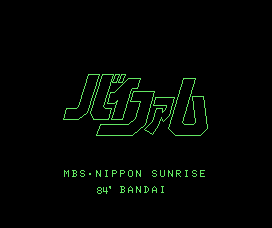
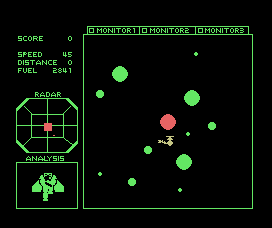
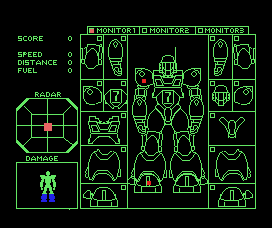
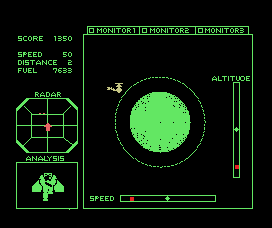
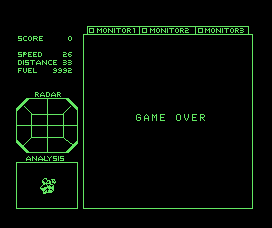



Reviews
There are no reviews yet.